 |
 |
 |
| |
Tight HBV Control Essential to HCC Prevention in People With HIV
|
| |
| |
CROI 2021, Conference on Retroviruses and Opportunistic Infections, March 6-10, 2021
Mark Mascolini
Reaching and maintaining an HBV DNA level below 200 IU/mL proved critical to avoiding hepatocellular carcinoma (HCC) in a big US-Canada study of people taking antiretroviral therapy (ART) for HIV [1]. "To gain maximal protective benefit from antiviral therapy for HCC prevention," NA-ACCORD investigators warned, "sustained HBV suppression may be necessary for years."
Chronic HBV infection remains a leading cause of HCC across the world, the NA-ACCORD team reminded colleagues. Although HBV and HIV infection often occur in the same individual, factors linking HBV to HCC in HIV-coinfected populations remain poorly defined. Much data on HBV and HCC come from Asian HBV cohorts with low HIV prevalence.
To address this knowledge gap, NA-ACCORD researchers tapped their big clinical database to pinpoint factors linked to HCC in people coinfected with HBV and HIV. From the 22-cohort North American collaboration, they selected adults with HIV RNA and CD4 measurements at points between January 1995 and December 2016 and with HBV infection indicated by HBsAg, HBeAg, or HBV DNA. The researchers excluded people who had an HCC diagnosis when entering their cohort or severe liver injury (ALT or AST above 1000 U/L 30 days before or after their first HBV lab test).
The primary outcome was HCC diagnosis during follow-up that continued until death, end to reporting HCC diagnoses in a cohort, not keeping cohort study visits, or December 31, 2016. To identify independent HCC risk factors, the investigators used multivariable Cox regression analysis of major risk factors including four time-updated variables-HIV RNA, HBV DNA, CD4%, and diabetes.
The study group included 8354 people with HBV and HIV with a median age of 43 (interquartile range 36 to 49). Most people in the study group, 93%, were men, 41% black, 35% heavy alcohol users, 22% with chronic HCV infection, 12% obese, and 6% with diabetes. While 45% had an HIV load above 500 copies/mL, 28% had a CD4% below 14%. Among the 64% with HBV DNA measured, median level was 100 IU/mL, and 55% had a level at or below 200 IU/mL. Three quarters of the study group (76%) took an antiretroviral regimen that included a drug active against HBV-lamivudine (3TC), emtricitabine (FTC), or tenofovir disoproxil fumarate (TDF).
During 65,392 person-years of follow-up, clinicians diagnosed 115 cases of HCC to yield an incidence of 1.8 cases per 1000 person-years (meaning about 2 of every 1000 people got diagnosed with HCC every year).
In all 8354 people analyzed, four traditional HCC risk factors independently predicted an HCC diagnosis: age 40 to 49 versus under 40 (adjusted hazard ratio [aHR] 1.97, 95% confidence interval [CI] 1.22 to 3.17), age 50 or older versus under 40 (aHR 2.55, 95% CI 1.49 to 4.35), heavy alcohol use (aHR 1.52, 95% CI 1.04 to 2.23), and chronic HCV coinfection (aHR 1.61, 95% CI 1.07 to 2.40). Time-updated HIV RNA and CD4% did not independently affect HCC risk in this analysis.
A separate analysis considered 3054 people who had quantitative HBV DNA measures. Compared to people with HBV DNA at or below 200 IU/mL, those with a higher HBV DNA load had a 2.7-fold higher risk of getting diagnosed with HCC (aHR 2.70, 95% CI 1.23 to 5.93). Compared with a sub-200 HBV DNA, higher HBV DNA brackets conferred higher risks of HCC: above 2000 (aHR 2.85, 95% CI 1.24 to 6.57), above 200,000 (aHR 4.34, 95% CI 1.72 to 10.94).
A third analysis involved 4891 people taking HBV-active ART and with HBV DNA measures over time. Compared with people who had detectable HBV DNA, undetectable HBV DNA for less than 1 year did not significantly affect HCC risk. But undetectable HBV DNA for more than 1 year lowered HCC risk 58% (aHR 0.42, 95% CI 0.24 to 0.73). Among people with more than 1 year of undetectable HBV DNA, those undetectable for 1 to 4 years had a nonsignificant 45% lower HCC risk than those with detectable HBV (aHR 0.55, 95% CI 0.28 to 1.07), while those undetectable for 4 or more years had a significant 66% lower HCC risk (aHR 0.34, 95% CI 0.17 to 0.67).
The NA-ACCORD team concluded that in this largely ART-treated cohort of people with HBV and HIV, HBV therapy lowered but did not eliminate HCC risk. That finding, they believe, underlines the importance of regular HBV DNA measures aimed at lowering HBV load as much as possible. "To gain maximal protective benefit from antiviral therapy for HCC prevention," the researchers suggested, "sustained and ideally uninterrupted suppression of HBV may be necessary over years."
Reference
1. Kim HN, Newcomb CW, Carbonari DM, et al. Hepatocellular carcinoma and HBV viremia in HIV/HBV-coinfected persons in NA-ACCORD. CROI 2021, Conference on Retroviruses and Opportunistic Infections, March 6-10, 2021. Abstract 136.
Liver cancer or hepatocellular carcinoma is the 5th leading cause of cancer-related deaths. Chronic hepatitis B remains a leading cause of HCC worldwide.
Chronic hepatitis B coinfection is common among in people with HIV
However the determinants of hep B associated HCC is not well characterized in PWH - most of our current knowledge comes from Asian cohorts without HIV
We sought to identify factors that contribute to HCC in this key population to guide early detection and prevention measures.
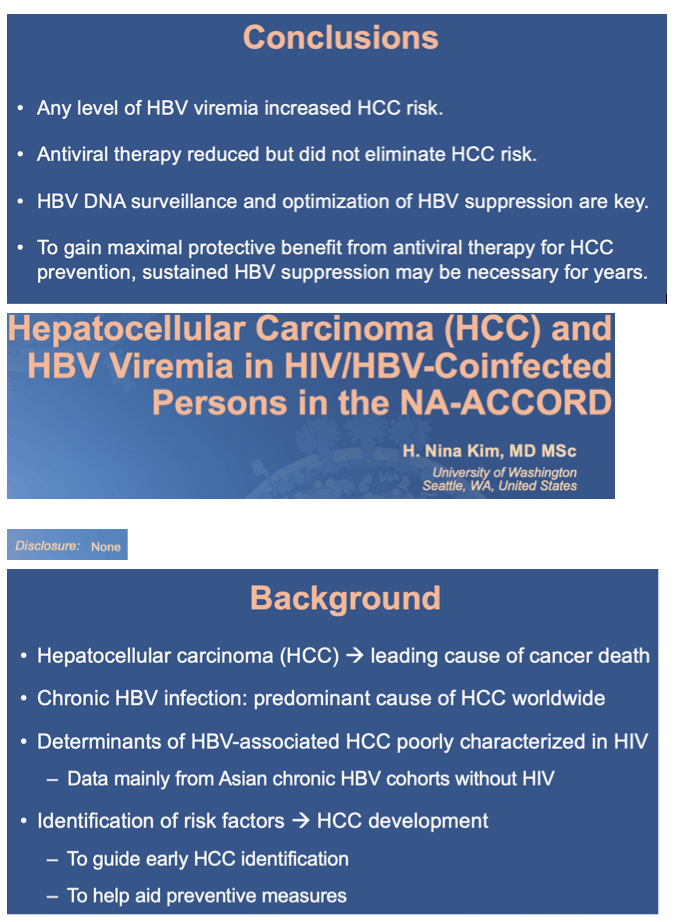
Liver cancer or hepatocellular carcinoma is the 5th leading cause of cancer-related deaths. Chronic hepatitis B remains a leading cause of HCC worldwide.
Chronic hepatitis B coinfection is common among in people with HIV
However the determinants of hep B associated HCC is not well characterized in PWH - most of our current knowledge comes from Asian cohorts without HIV
We sought to identify factors that contribute to HCC in this key population to guide early detection and prevention measures.

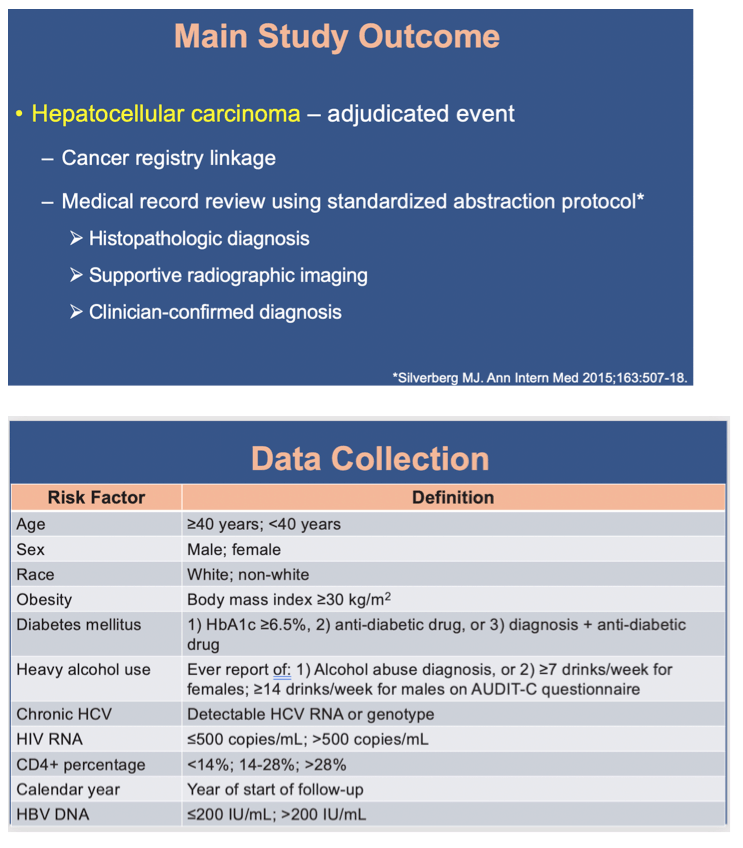
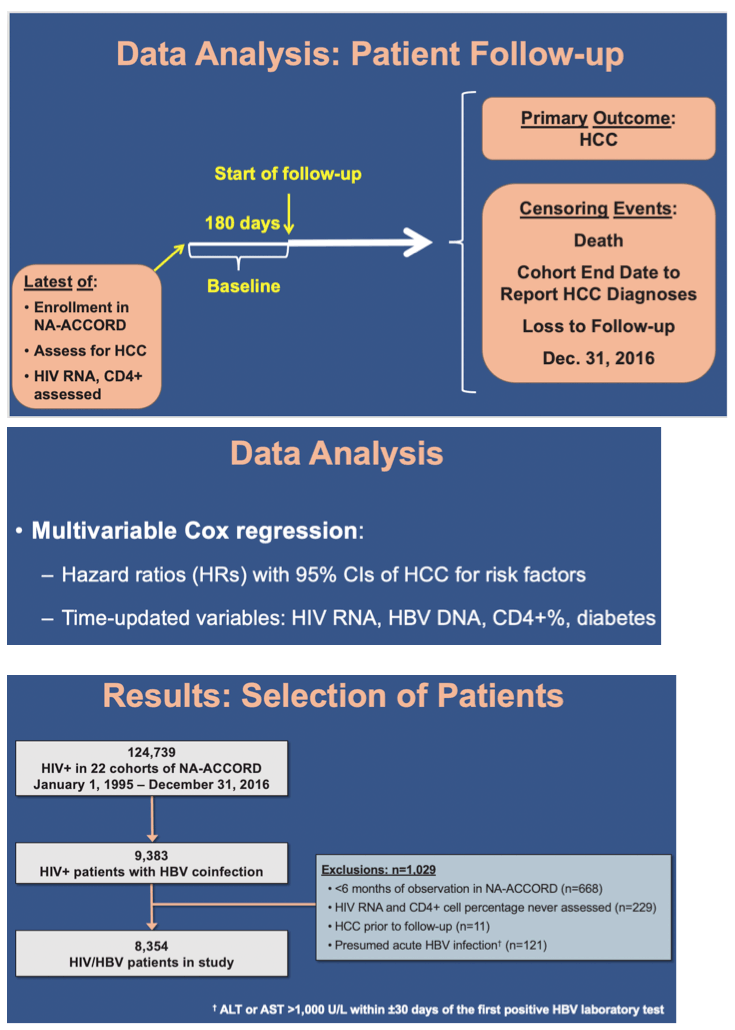

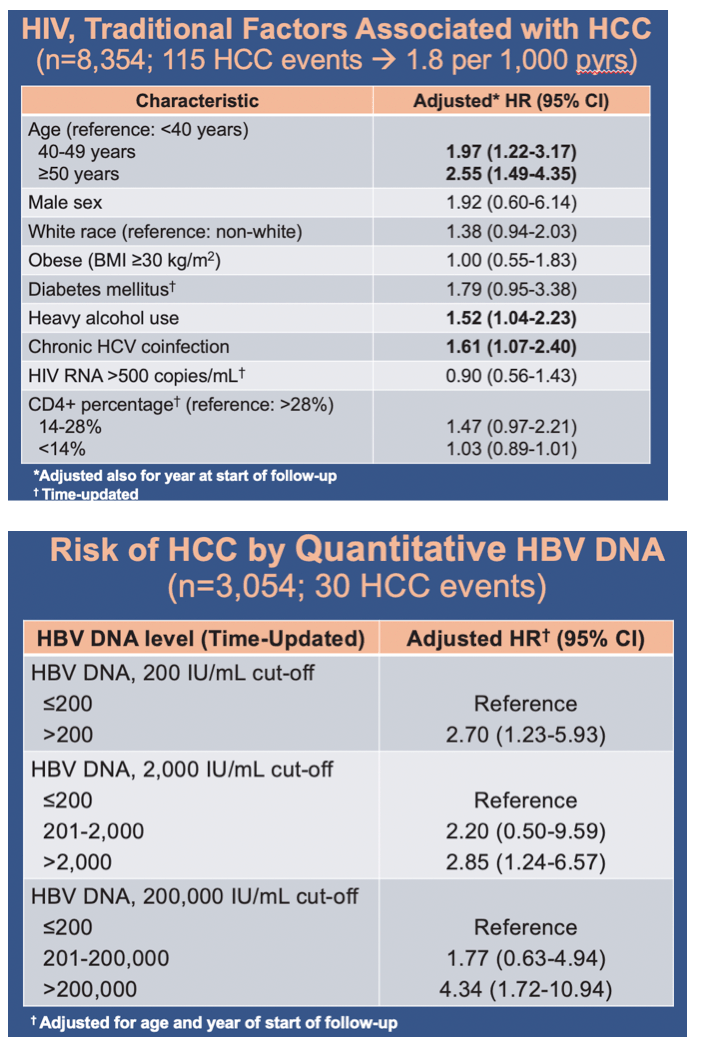

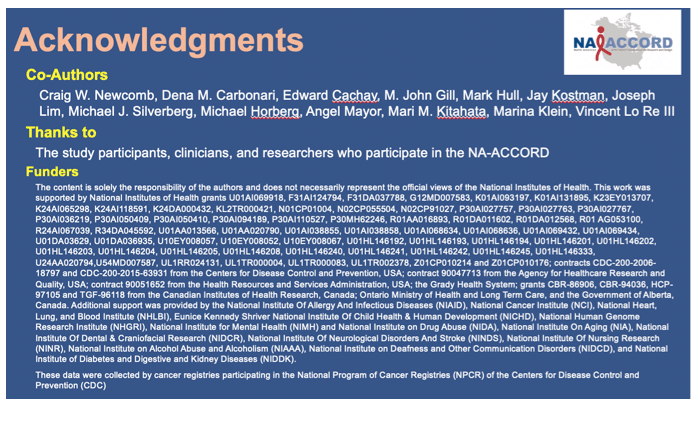
|
| |
|
 |
 |
|
|